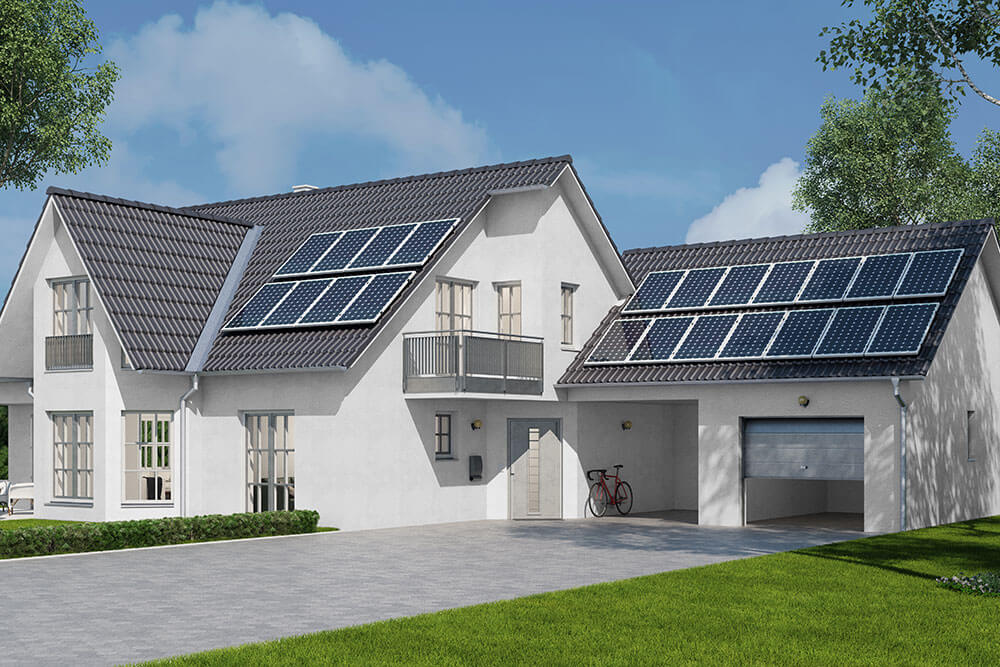
Eco-Friendly Home Financing: The Rise of Energy-Efficient Mortgages
Introduction
In an era where environmental sustainability is becoming increasingly important, homeowners are looking for ways to reduce their carbon footprint and lower energy costs. One of the avenues through which this can be achieved is through energy-efficient mortgages (EEMs). These specialized loans support eco-friendly home improvements and energy-efficient property purchases,
offering financial incentives to borrowers. Understanding how EEMs work and their benefits can help both homebuyers and homeowners make informed decisions.
What Are Energy-Efficient Mortgages?
Energy-efficient mortgages are loans that allow borrowers to finance energy-saving upgrades or purchase homes that meet certain energy efficiency standards. These mortgages take into account the expected energy savings from these improvements, often allowing for higher loan amounts based on the reduced utility costs.
Types of Energy-Efficient Mortgages
- FHA Energy Efficient Mortgage: The Federal Housing Administration (FHA) offers EEMs that enable borrowers to finance energy improvements up to specific limits. These loans are available for new home purchases or refinancing.
- VA Energy Efficient Mortgage: Veterans Affairs (VA) EEMs are available to military veterans and active-duty service members. They allow for energy efficiency improvements as part of a VA home loan.
- Conventional Energy-Efficient Mortgages: Some conventional lenders offer EEMs that do not fall under FHA or VA programs. These loans may have different requirements and benefits.
Benefits of Energy-Efficient Mortgages
- Lower Utility Bills: The primary benefit of EEMs is the potential for lower utility bills due to energy-efficient upgrades. This can lead to significant savings over time.
- Higher Loan Amounts: EEMs consider the future energy savings, which can justify a higher loan amount than a traditional mortgage. This allows borrowers to finance improvements without additional out-of-pocket expenses.
- Increased Home Value: Energy-efficient homes are often more attractive to buyers, potentially increasing the property’s resale value.
- Environmental Impact: By making energy-efficient improvements, homeowners can reduce their environmental footprint, contributing to broader sustainability efforts.
Qualifying for an Energy-Efficient Mortgage
To qualify for an EEM, borrowers must meet standard mortgage eligibility criteria. Additionally, they must undergo an energy assessment to identify potential improvements and estimate the expected savings. This assessment is typically performed by a certified energy rater.
Common Energy-Efficient Upgrades
- Insulation: Improving insulation in walls, attics, and basements can significantly reduce heating and cooling costs.
- Windows and Doors: Installing energy-efficient windows and doors helps maintain indoor temperature and reduces energy loss.
- Heating and Cooling Systems: Upgrading to high-efficiency HVAC systems can lower energy consumption and improve indoor comfort.
- Solar Panels: Adding solar panels can generate renewable energy, reduce reliance on grid electricity, and potentially provide long-term savings.
- Energy-Efficient Appliances: Replacing old appliances with ENERGY STAR-rated models can reduce electricity usage.
Steps to Obtain an Energy-Efficient Mortgage
- Energy Assessment: Schedule an energy assessment with a certified professional to identify improvements and estimate energy savings.
- Loan Application: Apply for an EEM through an FHA, VA, or conventional lender. Provide the necessary documentation, including the energy assessment report.
- Loan Approval: Once approved, the loan amount will include funds for the energy improvements. The lender may require verification of the completed improvements.
- Implementation: Hire contractors to complete the energy-efficient upgrades. Ensure all work meets the required standards and obtain any necessary permits.
- Verification: After the improvements are completed, a follow-up inspection may be required to verify that the upgrades meet the specified energy efficiency criteria.
Challenges and Considerations
While EEMs offer many benefits, there are some considerations to keep in mind:
- Upfront Costs: Although EEMs finance energy improvements, there may still be upfront costs associated with the energy assessment and any necessary inspections.
- Contractor Selection: Finding qualified contractors to perform energy-efficient upgrades is crucial. Ensure that contractors are experienced and certified to meet energy efficiency standards.
- Loan Complexity: EEMs can be more complex than traditional mortgages due to the additional requirements for energy assessments and improvements.
Conclusion
Energy-efficient mortgages provide a valuable opportunity for homeowners and buyers to make eco-friendly improvements while potentially lowering utility costs and increasing property value. By understanding the benefits, eligibility criteria, and process of obtaining an EEM, individuals can take advantage of this financing option to achieve a more sustainable and cost-effective home. Partnering with knowledgeable lenders and certified energy professionals can further streamline the process, ensuring that energy-efficient upgrades are implemented successfully and meet the desired standards.
Show me today's rates (Nov 8th, 2024)


